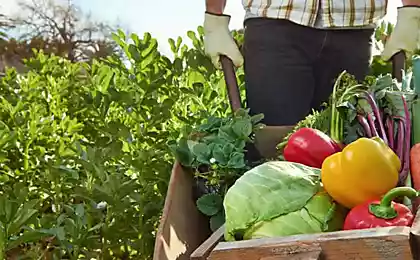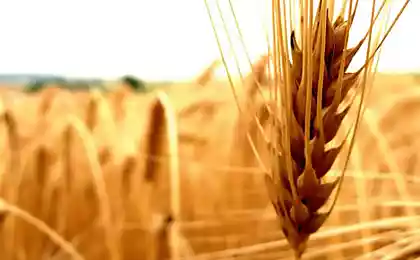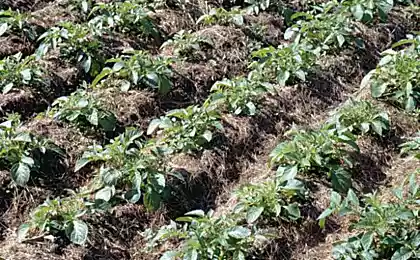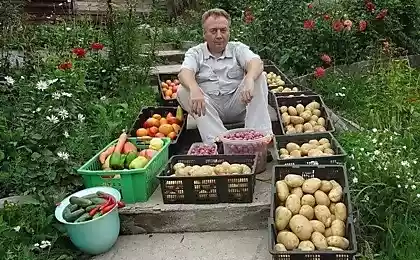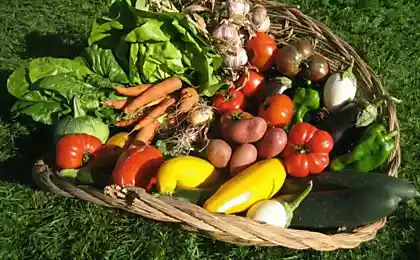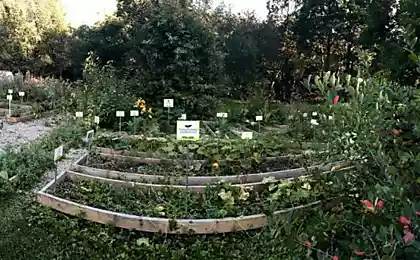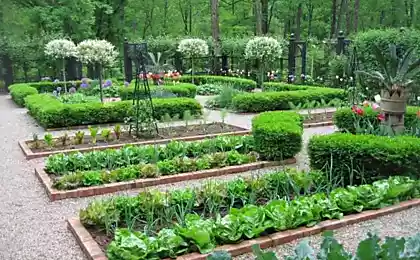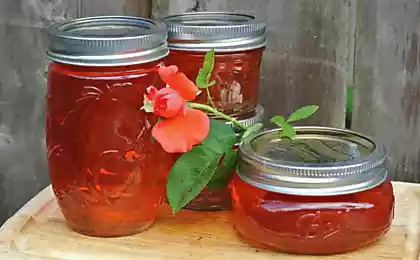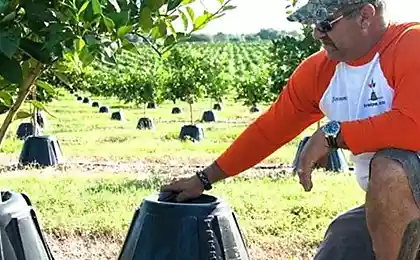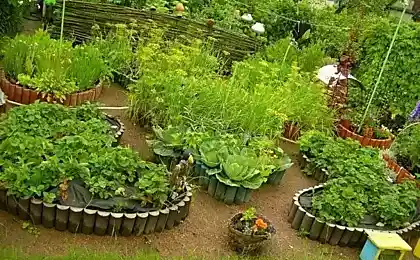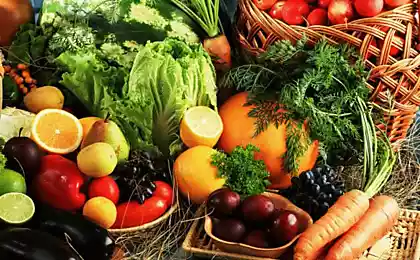184
Garden under straw - the ideal solution
A family of Mishur settlers share the secrets of growing food under straw.
The fertility in the eco-village Zvon-Gora near Vitebsk, where Vlad and Alla Mishurny live, is not understood quite what we used to mean. Fertility, explains Vlad, is not what a person takes from the soil, but its ability to extinguish and smooth out climatic influences, suck water, transport minerals within itself, decompose organic matter, retain water vapors and gases, bind nitrogen from the air, balance and restrain its population and many other properties. By the way, ideally, the soil regulates its population — these very kilograms of bacteria, insects, worms and fungi — so that the ratio is in favor of plants.
Extensive agriculture, which the Mishury have been engaged in for eight years, is aimed at preserving all these properties, that is, the fertility of the soil. And not just save, but year by year to increase. A straw garden for this is the ideal solution.
From straw to the first harvest – 2 years Immediately warn: if you decide to cover your garden with straw right now in the hope of getting a record harvest, nothing will work. No, good mulching has not hurt any garden. But like the Mishurns, it won't work. Because they're in no hurry.
“The earth tests man, the seriousness of his intentions, his strength,” Vlad said. - It takes a long time. But then, if you come into resonance with her, it rewards. You can work inertia for years, even if you don't do anything.
Soloma Misels are bought in a farm. They do not take loose, but in bales - so convenient, because it is already compressed. On the plot allocated for the future garden, lay it out, or rather, roll the bales so that the straw covers the ground with a layer of 80 centimeters. And... leave in this form for two years! They really aren't in a hurry.
Vegetation under the straw literally dissolves, tells and shows Vlad. It only breaks through the blanket. He jewels his thin blades of grass into straws and comes out into the light. Straw with wheat is simply carried out in arms and put in a pile, where it intersperses. It won't disappear, Vlad explains. Organic is used in its entirety.
Over time, the "blanket" in places sags, and it is leveled, put in holes of fresh straw. She's overreacting.
- Here eight bales were laid out on this square, and one and a half remained of the strength of the bale, can you imagine how much organic matter went into the ground in two years? - Vlad demonstrates the site almost ready for use.
After two years, the straw is removed and... But they didn't guess, they don't take shovels. Treat the soil straw gardeners cultivator "Tornado". Twisting a lump, pulling like a tooth from the gums. Choosing roots. There are few of them, mostly dandelions. Well, and the evil wheatgrass - where without it? The earth does not turn upside down, but only loosens. “Tornado” seems strange tool, and the process, in my opinion, is somewhat slower than the usual digging.
- But this site I will not touch anything again and never! – lays out a trump card Vlad. Just plant and sprinkle straw where you need it. And it is difficult to work with a spinner (for example, ignoring the foreign name “Tornado”, he calls the cultivator) only at first, and this work is considered easy for us, women are engaged in it.
Solomu love onions and strawberries Mishury straw underlie everything - from bulba to flowers on flower beds. And everyone grows.
- Here are the thickets of strawberries, Vlad continues the excursion. For three years it grows, bears fruit, does not rot. Even last year, when it rained, it did not rot. It's the straw.
Potatoes in a straw garden grow in three tiers. When it begins to break out from under the straw, it is again covered with “head”. Two or three times. On the lower tier, the bulbins are the largest, on the upper - smaller. Carrots, garlic, onions - everything grows in straw. In the greenhouse, tomatoes are also planted in straw, only already pretty trampled - so more convenient. And cabbage likes straw. Cabbage is moisture-loving, and straw keeps the ground moist. Peas, beans, cucumbers - you can list for a long time.
How much does it grow? The same potatoes are now obtained from their straw garden in the proportion of 1x25. That is, one bag was planted, 25 in the fall dug. And when the children grow up, Vlad dreams, all soil indicators will improve so much that he can give them all fifty bags per planted. All vegetables and fruits for a year the family provides themselves with more than enough.
Extensive farming, in general, is not a novelty, but rather a well-forgotten old knowledge. Now it is increasingly gaining popularity among summer residents. What about, for example, a medium-sized farm?
- It is quite appropriate, because extensive agriculture was used on an industrial scale in the nineteenth century, Vlad Mishurnyi said. I was very impressed by Ivan Ovsinsky’s brochure. This is the first Russian agronomist to prove the uselessness of the plow! At one time, Ovsinsky made a splash in tsarist Russia: he increased the yield of grain ten times, four times reducing the cost of labor and money.
Source kp.ru
Source: rodovid.me
The fertility in the eco-village Zvon-Gora near Vitebsk, where Vlad and Alla Mishurny live, is not understood quite what we used to mean. Fertility, explains Vlad, is not what a person takes from the soil, but its ability to extinguish and smooth out climatic influences, suck water, transport minerals within itself, decompose organic matter, retain water vapors and gases, bind nitrogen from the air, balance and restrain its population and many other properties. By the way, ideally, the soil regulates its population — these very kilograms of bacteria, insects, worms and fungi — so that the ratio is in favor of plants.
Extensive agriculture, which the Mishury have been engaged in for eight years, is aimed at preserving all these properties, that is, the fertility of the soil. And not just save, but year by year to increase. A straw garden for this is the ideal solution.
From straw to the first harvest – 2 years Immediately warn: if you decide to cover your garden with straw right now in the hope of getting a record harvest, nothing will work. No, good mulching has not hurt any garden. But like the Mishurns, it won't work. Because they're in no hurry.
“The earth tests man, the seriousness of his intentions, his strength,” Vlad said. - It takes a long time. But then, if you come into resonance with her, it rewards. You can work inertia for years, even if you don't do anything.
Soloma Misels are bought in a farm. They do not take loose, but in bales - so convenient, because it is already compressed. On the plot allocated for the future garden, lay it out, or rather, roll the bales so that the straw covers the ground with a layer of 80 centimeters. And... leave in this form for two years! They really aren't in a hurry.
Vegetation under the straw literally dissolves, tells and shows Vlad. It only breaks through the blanket. He jewels his thin blades of grass into straws and comes out into the light. Straw with wheat is simply carried out in arms and put in a pile, where it intersperses. It won't disappear, Vlad explains. Organic is used in its entirety.
Over time, the "blanket" in places sags, and it is leveled, put in holes of fresh straw. She's overreacting.
- Here eight bales were laid out on this square, and one and a half remained of the strength of the bale, can you imagine how much organic matter went into the ground in two years? - Vlad demonstrates the site almost ready for use.
After two years, the straw is removed and... But they didn't guess, they don't take shovels. Treat the soil straw gardeners cultivator "Tornado". Twisting a lump, pulling like a tooth from the gums. Choosing roots. There are few of them, mostly dandelions. Well, and the evil wheatgrass - where without it? The earth does not turn upside down, but only loosens. “Tornado” seems strange tool, and the process, in my opinion, is somewhat slower than the usual digging.
- But this site I will not touch anything again and never! – lays out a trump card Vlad. Just plant and sprinkle straw where you need it. And it is difficult to work with a spinner (for example, ignoring the foreign name “Tornado”, he calls the cultivator) only at first, and this work is considered easy for us, women are engaged in it.
Solomu love onions and strawberries Mishury straw underlie everything - from bulba to flowers on flower beds. And everyone grows.
- Here are the thickets of strawberries, Vlad continues the excursion. For three years it grows, bears fruit, does not rot. Even last year, when it rained, it did not rot. It's the straw.
Potatoes in a straw garden grow in three tiers. When it begins to break out from under the straw, it is again covered with “head”. Two or three times. On the lower tier, the bulbins are the largest, on the upper - smaller. Carrots, garlic, onions - everything grows in straw. In the greenhouse, tomatoes are also planted in straw, only already pretty trampled - so more convenient. And cabbage likes straw. Cabbage is moisture-loving, and straw keeps the ground moist. Peas, beans, cucumbers - you can list for a long time.
How much does it grow? The same potatoes are now obtained from their straw garden in the proportion of 1x25. That is, one bag was planted, 25 in the fall dug. And when the children grow up, Vlad dreams, all soil indicators will improve so much that he can give them all fifty bags per planted. All vegetables and fruits for a year the family provides themselves with more than enough.
Extensive farming, in general, is not a novelty, but rather a well-forgotten old knowledge. Now it is increasingly gaining popularity among summer residents. What about, for example, a medium-sized farm?
- It is quite appropriate, because extensive agriculture was used on an industrial scale in the nineteenth century, Vlad Mishurnyi said. I was very impressed by Ivan Ovsinsky’s brochure. This is the first Russian agronomist to prove the uselessness of the plow! At one time, Ovsinsky made a splash in tsarist Russia: he increased the yield of grain ten times, four times reducing the cost of labor and money.
Source kp.ru
Source: rodovid.me
